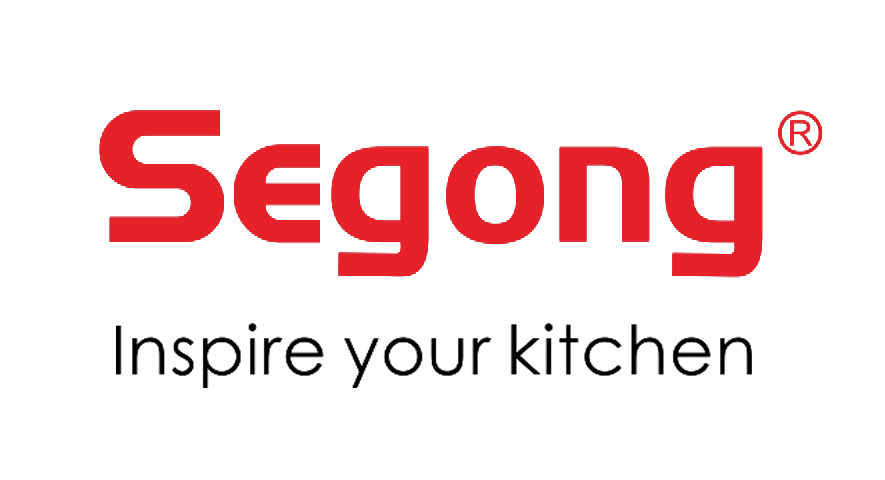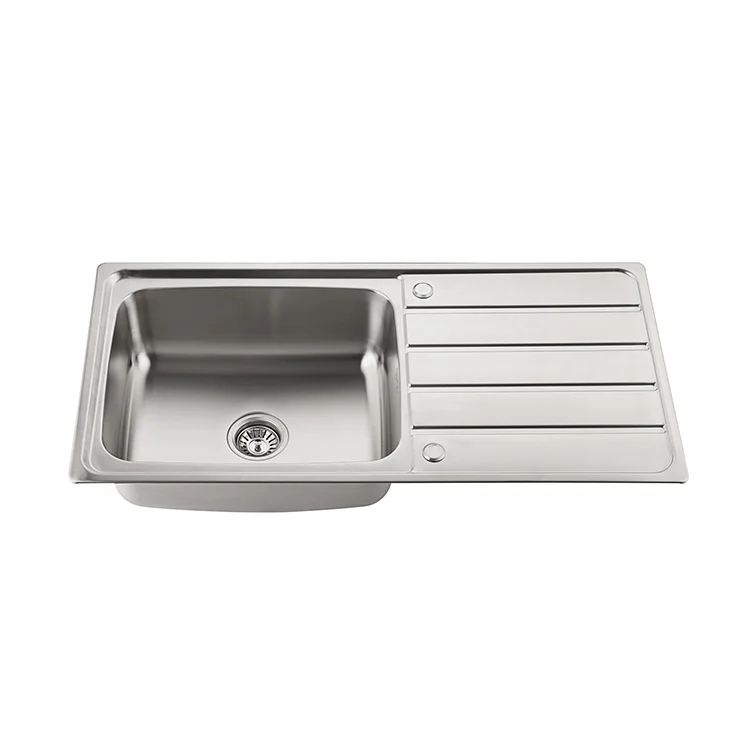Megértés Nyomásfűtők az ipari alkalmazásokban
A hajítócsatornák és alapfunkcióik meghatározása
A prészsinkerek egy olyan hidraulikus rendszerfajtát képviselnek, amelyet nagy nyomáson dolgozó anyagokkal való működésre terveztek, és nagyon fontos szerepet játszanak különböző ágazatok alkatrészeinek előállításában. Alapvetően ezek a gépek segítenek az anyagok formázásában, alakításában és akár vágásában is, ami összességében gyorsabbá és pontosabbá teszi a gyártást. Amikor a gyártók prészsinkereket építenek be gyártósoraikba, az eredmény általában magasabb minőségű termékek előállítása, amelyek az előírt szigorú tűréshatárokat minden darabnál betartják. Ezeknek a rendszereknek a működésének vizsgálata rávilágít arra, miért olyan értékesek a gyártóüzemek termelési kapacitásának növelésében. Az autóipari alkatrészek háztartási készülékekig terjedően a prészsinke technológia elengedhetetlenné vált a mai ipari gyártási környezetek világszerte támasztott követelményeinek fenntartásához.
Gyakori iparágak, amelyek alkalmazzák Nyomásos mosdó TECHNOLOGIA
A prészsalu technológia több kulcsfontosságú iparágban, például az autógyártásban, a repülőgépipari alkatrészek gyártásában és az elektronikai eszközök nagyüzemi gyártásában is elengedhetetlenné vált. Ezek a gépek mindenféle lemezalkatrész-formázási műveleteket és összetett műanyag fröccsöntési feladatokat látnak el, amelyek nélkülözhetetlenek a gyártósorok mindennapi, zavartalan működéséhez. A legújabb piaci jelentések szerint egyre több vállalat alkalmazza ezt a felszerelést, mivel a gyártók egyre nagyobb nyomást gyakorolnak arra, hogy ezrekben lehessen előállítani azonos alkatrészeket, miközben szigorú minőségellenőrzést kell fenntartani minden egyes gyártási sorozat során. A globális piacokon fokozódó verseny mellett számos üzemvezető számára ma már a prészsaluk nélkülözhetetlen eszközzé váltak a folyamatok egyszerűsítéséhez és az anyagveszteség csökkentéséhez nagy tételek gyártása során.
A költségkomponensek bontása
Kezdeti beruházási és telepítési költségek
A prészúzdák vásárlásakor a költségek nem csupán a vételárból állnak, hanem az installációs díjakból is, amelyek a hidraulikus rendszer bonyolultságától függően változhatnak. Egy jó minőségű prészúzda általában annyira növeli a termelési rátát, hogy végül önmagát megtérítheti. Azok a vállalatok, amelyek figyelembe veszik a költségvetésüket, gyakran felkeresik a vezető gyártókat árinformációkért, hogy eldönthessék, gazdaságilag indokolt-e a jelenlegi kiadás. Ez a megközelítés segít a vezetésnek összehasonlítani a kiadásokat azzal, hogy mennyivel nő a termelés, miközben biztosítani kell, hogy minden a cég általános pénzügyi stratégiáján belül maradjon, túlterhelés nélkül.
Működési és karbantartási költségek a hosszú távon
Az üzemeltetett sajtómosásokhoz több folyamatos költség is társul, beleértve az áramszámlákat, a működéshez szükséges személyzeti időt, valamint az időnként szükséges kisebb javításokat és cseréket. Ezek a költségek végül igencsak összeadódnak. Azok a vállalatok, amelyek ragaszkodnak a rendszeres karbantartáshoz, általában elkerülik azokat a váratlan meghibásodásokat, amelyek később nagy költségekkel járnak a kijavításuk során. Amikor a vállalkozások valóban nyomon követik ezeket a kiadásokat a költségvetési folyamat részeként, sokkal pontosabban látják, hogy valójában mennyibe kerül a sajtómosások tulajdonlása és üzemeltetése hónapról hónapra. Ezeknek az ismerete segíti az üzemvezetőket abban, hogy előre tervezhessék a jövőbeli kiadásokat, és kitalálják, hogyan lehetne a műveleteket zökkenőmentesen fenntartani anélkül, hogy megrongálnák a költségvetést.
A nyomtatási mosógép alkalmazásának előnyeinek mérésével
Termelékenységi nyereségek és hatékonysági javítások
A gyártási környezetekben a prészónák valóban nagyban hozzájárulnak ahhoz, hogy a feladatokat gyorsabban és hatékonyabban végezzék el. Amikor a vállalatok telepítik ezeket a rendszereket, gyakran tapasztalják, hogy a termelővonaluk lényegesen gyorsabban működik. Egyes gyárak körülbelül 30%-os termelésnövekedést jelentenek a prészóna technológiára való áttérés után, ami jól mutatja, mekkora hatással lehetnek a mindennapi műveletekre. A zökkenőmentesebb munkafolyamatoknak köszönhetően csökken a várakozási idő az egyes termelési szakaszok között, és a dolgozóknak sem kell hosszú ideig várniuk alkatrészek érkezésére. Ez azt jelenti, hogy a gyármenedzserek a személyzetet ott tudják felhasználni, ahol a legnagyobb a szükség rá, nem pedig tétlenül állni. Azok számára, akik gyártóként szeretnének lépést tartani a vásárlói megrendelésekkel anélkül, hogy megbontanák a költségvetést, a prészóna megoldásokba való beruházás gazdaságilag is értelmes döntés a mai gyorsan változó ipari környezetben.
Minőségbiztosítási Előnyök a Gyártásban
A sajtolóprés-berendezések hozzáadása a gyártósorokhoz valódi minőségellenőrzési javulásokat eredményez szerte a vállalatnál. Ezek a rendszerek segítenek a folyamatok sokkal stabilabb fenntartásában, csökkentve a hibák és hulladék mennyiségét, miközben növelik a termékek általános minőségét. Az automatizált, valós idejű felügyeleti rendszereknek köszönhetően a gyártás irányítói szükség esetén azonnal módosíthatják a műveleteket, így fenntartva a magas minőségi szintet a termelési folyamatok során. Több üzem adatai alapján a rendszerek bevezetését követően körülbelül 30%-os csökkenést értek el a javítómunkák arányában, ami jelentős anyagszükséglet-csökkenést és elégedettebb vásárlókat eredményez, akik megkapják azt, amit a termékért fizettek. A jobb minőségön túl a vállalatok piaci megítélése is megerősödik, hiszen a fogyasztók számára folyamatosan megbízható minőséget képviselnek.
Hosszú távú vs Rövid távú Pénzügyi Megfontolások
Azonnali költségcsökkentés folyamatoptimalizáció révén
Amikor a gyártók présolókat építenek be a termelési folyamataikba, általában azonnali költségmegtakarítást érnek el a munkaórák és nyersanyagok hatékonyabb kezelésének köszönhetően. Ezek az automatizált rendszerek csökkentik az ismétlődő feladatokat végző munkások számának szükségességét, ami természetesen a bérköltségek csökkenését is eredményezi. A présoló technológia egyúttal simább folyamatokat is biztosít, így a legtöbb vállalat gyorsabban térül meg, mint várták, mivel kevesebb idő és erőfeszítés mellett több terméket tudnak előállítani. Az adatok alapján világos, hogy ezek az azonnali pénzmegtakarítások mennyire fontosak a gyárak zavartalan működéséhez nehéz piaci körülmények között.
Hosszabb élettartam és csökkentett cserére való szükség
A préselt mosdók hosszabb élettartamúak, mint a régebbi modellek, így nem kell annyiszor cserélni őket. Ez azt jelenti, hogy az üzletek hosszú távon pénzt takaríthatnak meg, ahelyett, hogy folyamatosan újakat kellene vásárolniuk. A hosszabb élettartam valójában csökkenti a teljes kiadásokat, ami összhangban van a modern fenntarthatósági célokkal. Amikor a költségvetésre nézünk, azok a vállalatok, amelyek nyomon követik ezeket a megtakarításokat, nagyobb mozgásteret kapnak a költségvetésükben. Egy étteremlánc, amellyel nemrég dolgoztunk, több ezer forintot spórolt meg az ilyen tartós megoldásokra való áttéréssel. Ezeket a forrásokat inkább a konyha felújítására fordították, ahelyett hogy néhány évente csupán a cserére költenék a pénzt. Idővel ez a megközelítés valódi pénzügyi stabilitást teremt, miközben fenntartja az üzemeltetési minőségi szabványokat.
Környezeti hatás és fenntarthatósági tényezők
Energiakihasználati javítások modern nyomás alatti mosdákkal
A modern nyomócső technológia valóban megváltoztatja, hogy mennyi energiát használnak fel a gyártási folyamatok napjainkban. A vállalatok azt tapasztalják, hogy az újabb rendszerek rendelkeznek különféle energiatakarékos funkciókkal, amelyek csökkentik az áramfogyasztást a 90-es évek óta használatban lévő régi modellekhez képest. Egyes gyárak jelentik, hogy az áramszámláikat majdnem felére csökkentették az ilyen hatékony nyomógépekhez való áttérést követően. És valljuk be, hogy a költségmegtakarítás a mérleg végén, miközben csökkentjük a szénlábat, jó üzleti értelemben is megéri. A gyártók többsége számára ez egy nyerő-nyerő helyzet, ahol zöld célokat érnek el anélkül, hogy a termelékenység vagy a jövedelmezőség rovására menne.
Zselírozás csökkentése és környezetvédelmi megfelelőség előnyei
A modern sajtolóberendezések valóban segítenek csökkenteni a hulladékot, mert a gyártást sokkal pontosabbá teszik, így lényegesen kevesebb anyag kerül eldobásra. Ha az anyagokat helyesen használják fel, nem pazarolják el, akkor a vállalatok pénzt takaríthatnak meg, miközben környezetbarát módon működhetnek. A folyamatosan megjelenő új technológiáknak köszönhetően a gyártók számára egyre könnyebbé válik a mind szigorodó környezetvédelmi előírásoknak való megfelelés. Azok a vállalatok, amelyek áttérnek ezekre a zöldebb módszerekre, általában jobb megítélést élveznek a felügyeleti szervek és a vásárlók előtt egyaránt. A gyárak tényleges eredményeinek vizsgálata, amelyek modern sajtórendszerekre váltottak, valós javulást mutat a költségkímélés és a tisztább gyártási folyamatok terén hosszú távon.
Vizsgálat: Términvisszaesés elemzése nyomómosó alkalmazásra
Valós árképzési projekciók és mentés időtartama
A valós esetpéldák szemléltetik, hogy miért váltanak át annyi gyártó a préselt mosogatók használatára. A legtöbb vállalat az üzembe helyezést követő egy-három évben visszanyeri a beruházást. Nézzük például az élelmiszer-feldolgozó üzemeket, amelyek egyes esetekben a karbantartási költségek 30%-os csökkenését jelentették az ilyen rendszerek telepítése után. A számok szintén beszédesek, ha a kezdeti kiadásokat hasonlítjuk össze a hosszú távú megtakarításokkal. Az anyagi megtakarításokon túl azonban itt van még valami. Amikor a gyárak ilyen technológiára váltanak, valójában versenyelőnyt szereznek azokkal szemben, akik még mindig a régi módszerekre támaszkodnak. Ez napjainkban egyre inkább általánossá válik, ahogy az üzletek felismerik az anyagi előnyöket és a hosszú távú működési javulásokat is.
Tanulságok sikeres gyártási implementációkból
Ahol a gyártók jól használták a sajtómedencéket, azok tanulságokként szolgálhatnak más gyártók számára. Amikor a vállalatok ezeket a sikertörténeteket vizsgálják, gyakran találnak olyan módszereket, amelyek segítenek elkerülni mások hibáit, és javítják a beruházásaik megtérülését. Nézzük például a Ford Michigan-i üzemét, ahol múlt évben bevezették a sajtómedence technológiát, és ezzel a termelékenység 15%-kal nőtt. Mi biztosítja ezeknek a megoldásoknak a hosszú távú eredményességét? A legtöbb sikeres bevezetés közös jellemzője, hogy a vezetőség korán elkötelezi magát, és szorosan együtt dolgozik a mérnökökkel a beállítási folyamat során. Ezt a számok is alátámasztják. A Gyártási Szövetség legutóbbi jelentései szerint azok az üzemek, amelyek sajtómedencéket használnak, havonta 20.000 és 50.000 dollár közötti összeget takarítanak meg csak az energia költségeken. Bár nem minden vállalkozás éri el ugyanazt az eredményt, a legtöbb esetben ezek a rendszerek az 18 hónapos karbantartási időszak után megtérülnek.
A kihívások áthidalása nyomás-alapú mosórendszer befektetéseknél
A közös pénzügyi aggályok kezelése
A sajtolómosók beszerzésének gondolata általában először a pénzügyi aggodalmakat idézi elő. A legtöbb vállalat attól tart, mennyit kell majd előre költeni, mennyi időre állhat le a működésük a telepítés alatt, és hogy az egész folyamat túl bonyolult lesz-e kezelni. A kis- és középvállalkozások még inkább szembesülnek ezzel a kihívással, mivel számukra a likviditás különösen szűkös. Vannak azonban módok ezekre a problémákra. Alapos költségkalkuláció és realisztikus költségvetési terv készítése segít enyhíteni a pénzügyi félelmeket. Amikor a vállalatok komolyan leülnek, és részletesen áttekintik az összes kiadást, valamint azonosítják a jövőbeli megtakarítási lehetőségeket, akkor azok hosszú távon kedvezőbb képet mutatnak. Ne feledkezzünk meg a finanszírozási alternatívákról sem. Számos sajtolómosó gyártó kínál lízingelési lehetőséget vagy különleges részletfizetési konstrukciókat, amelyek áthidaló megoldást jelentenek a kívánt eszköz azonnali igénye és annak azonnali megfizethetősége között. Ezek az opciók jelentősen csökkentik az új felszerelések pénzügyi terhét, mint amilyennek elsőre tűnik.
Stratégiák a TÉR maximalizálásához
A sajtoló beruházásokból való maximális haszon eléréséhez komoly előzetes tervezés szükséges, amely összhangban van azzal, amit a vállalat hosszú távon el szeretne érni. A konkrét célok meghatározása és az előrehaladás mérése segít biztosítani, hogy ezek a beruházások valóban a vállalkozás céljai felé mozdítsák el a folyamatokat. A dolgozók rendszeres képzése szintén nagyban hozzájárul az eredmények javításához. Azok a munkatársak, akik ismerik a berendezések helyes használatát, általában jobb eredményeket érnek el, miközben csökkentik az időpazarló meghibásodásokat. A technológiai frissítések, például automatizált rendszerek vagy adatnyilvántartó eszközök figyelembevétele sem elhanyagolható. Ezek a kiegészítések valóban növelik a termelékenységet, és végül javítják a nyereséget. Azok a vállalatok, amelyek az új felszerelések bevezetésekor a teljes képet is figyelembe veszik, általában sokkal jobb gazdasági eredményeket érnek el hosszabb távon, mint azok, amelyek megfontolt tervezés nélkül cselekednek.
Tartalomjegyzék
- Megértés Nyomásfűtők az ipari alkalmazásokban
- A költségkomponensek bontása
- A nyomtatási mosógép alkalmazásának előnyeinek mérésével
- Hosszú távú vs Rövid távú Pénzügyi Megfontolások
- Környezeti hatás és fenntarthatósági tényezők
- Vizsgálat: Términvisszaesés elemzése nyomómosó alkalmazásra
- A kihívások áthidalása nyomás-alapú mosórendszer befektetéseknél



